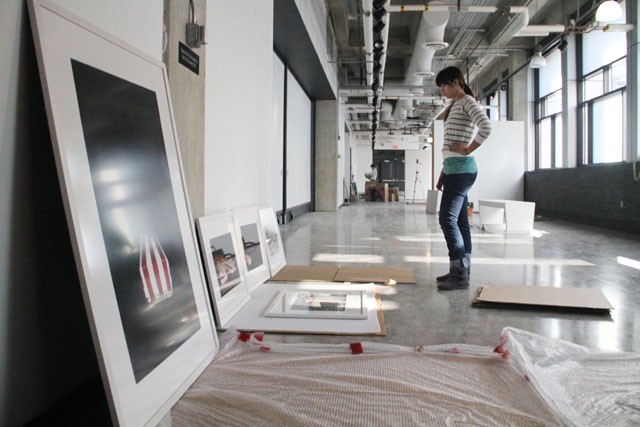What: Navigating the Aftermath
When: Tomorrow, Feb. 18
Where: Regis Center for Art
ItâÄôs getting harder each week to keep the disheartening headlines of today in order. Amidst our polarized domestic political climate, health care and deficit issues have dulled the noise of our conflicts abroad. However, the Regis Center for ArtâÄôs âÄúNavigating the AftermathâÄù exhibition aims to turn the lens back toward the ongoing struggle in Iraq as a means of initiating reconciliation.
Sponsored by the Iraqi and American Reconciliation Project, the exhibition offers a collection of work from both American veterans and Iraqi artists as a means of proposing a healing dialogue for a wound that remains fresh for many.
âÄúFor the veterans, itâÄôs like, âÄòHow do I go on?âÄôâÄù curator Tricia Khutoretsky said. âÄúAnd for the Iraqis itâÄôs kind of the same question, âÄòWho are we now that this has happened to us?âÄôâÄù
The exhibitors also come from varied positions of exposure and investment in the personal stakes of the conflict. Portland artist Jim Lommasson takes a documentary approach with his sprawling photographic installation âÄúExit Wounds: Combat Trauma and the Trials of Homecoming,âÄú which aims at exploring the tolls of war on American servicemen.
In a greater emphasis of the showâÄôs mixed media offerings, Montreal artist and Iraqi native Sundus Abdul Hadi will bring her aural-infused gallery âÄúWarchestraâÄù to RegisâÄô space.
In collaboration with Montreal musicians, Hadi constructed a series of mixed-media collages aimed at reclaiming her native cultural iconography from the western world.
âÄúBeing of an Iraqi origin, when the war started, I started really collecting images that were coming out,âÄù she said. âÄúI realized the misrepresentation that was happening was really skewed.âÄù
Hadi works with the overblown jihadist subjects that have pervaded American news outlets. However, the weaponry of these oft-vilified masked figures is now replaced with musical instruments âÄî a method of stabilizing and re-emphasizing the cultural wealth of her people.
âÄúIt was sad to see how [Western media] was really getting away with it,âÄù Hadi said. âÄúIt normalized the war and brought apart support.âÄù
While the exhibitionâÄôs intentions of reconciliation remain a central theme, the reality of the conflictâÄôs continuation is something that shapes the show as well.
âÄúSo much has been done and is continuing to be done,âÄù Khutoretksy said, âÄúbut people are trying to transcend it on some level.âÄù
But according to Hadi, the eye-opening capacity of artwork is supplemental to progress that can come only from an evolution in American foreign policy.
âÄúWords like reconciliation can pacify a situation,âÄù she said, âÄúbut a greater issue becomes taking responsibility.âÄù
The fact that these exhibiting artists approach the contemporary issue with utmost loyalty and sternness in their convictions reiterates the exhibiting piecesâÄô integrity.
âÄúNavigating the AftermathâÄù is no exercise in sympathy or naïve celebration of resolve. Those involved carry staunch opinions on the struggle, which is usually where the most earnest and affecting art comes from.








